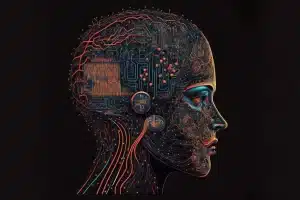What is AI?
Artificial Intelligence (AI) refers to the development of computer systems that can perform tasks that typically require human intelligence. These tasks include learning, reasoning, problem-solving, perception, language understanding, and speech recognition. AI aims to create machines or software that can mimic cognitive functions such as learning from experience, adapting to new inputs, and improving performance over time.

What AI do for packaging industry?
Artificial Intelligence (AI) has several applications in the packaging industry, contributing to efficiency, quality control, and overall improvement in processes. Some of the ways AI is utilized in the packaging industry include:
Quality Control: AI can be employed to enhance quality control processes by automatically inspecting and identifying defects in packaging materials and products. Machine vision systems, powered by AI algorithms, can quickly analyze images to detect imperfections, ensuring that only high-quality products reach consumers.
Predictive Maintenance: AI can predict equipment failures and maintenance needs in packaging machinery. By analyzing data from sensors and machine performance history, AI algorithms can anticipate when maintenance is required, reducing downtime and preventing costly breakdowns.
Supply Chain Optimization: AI helps optimize the packaging supply chain by analyzing data related to inventory levels, demand forecasts, and production schedules. This enables more efficient resource allocation, reducing waste and improving overall supply chain management.
Smart Packaging Design: AI can assist in designing more efficient and sustainable packaging solutions. By analyzing data on material properties, cost factors, and environmental impact, AI algorithms can recommend optimal packaging designs that meet both functional and sustainability requirements.
Robotic Packaging Systems: AI is integral to the development of robotic packaging systems. These systems use computer vision and machine learning to handle various packaging tasks, such as sorting, picking, packing, and palletizing. This automation enhances speed, accuracy, and efficiency in packaging processes.
Customization and Personalization: AI can be utilized to implement customized and personalized packaging solutions. By analyzing customer data and preferences, companies can tailor packaging designs and messages to specific target audiences, creating a more engaging and personalized experience for consumers.
Energy Efficiency: AI can contribute to energy efficiency in the packaging industry by optimizing production processes. It can analyze data to identify areas where energy consumption can be reduced without compromising quality, thereby helping companies achieve sustainability goals.
Waste Reduction: AI applications can help minimize packaging waste by optimizing the use of materials and identifying opportunities for recycling and reuse. This aligns with sustainability initiatives and reduces the environmental impact of packaging operations.
Can AI design the packagings or equipments for us?
AI can play a role in designing packaging and equipment in the manufacturing industry. Here’s how AI can contribute to the design process:
- Generative Design: AI algorithms can use generative design techniques to explore a vast range of design possibilities based on specified parameters and constraints. This can be particularly useful in optimizing the structural aspects of packaging or equipment to enhance strength, durability, and efficiency.
- Algorithmic Design: AI-powered algorithms can assist in creating designs based on predefined rules and patterns. This is especially helpful for repetitive tasks and standardizing certain aspects of packaging or equipment design.
- Machine Learning for Design Optimization: Machine learning algorithms can analyze large datasets of design information, user preferences, and performance feedback to optimize designs over time. This iterative process can lead to more efficient and effective packaging or equipment designs.
- Customization: AI can enable mass customization by analyzing consumer data and preferences to create personalized packaging designs. This can be particularly beneficial for industries where customization is a key factor, such as in the production of consumer goods.
- Simulation and Prototyping: AI-powered simulations can model the performance of different packaging or equipment designs under various conditions. This helps in identifying potential issues and refining designs before physical prototypes are produced, saving time and resources.
- Collaborative Design: AI tools can facilitate collaborative design processes by providing real-time feedback and suggestions to human designers. This collaborative approach can lead to more innovative and optimized designs.
- Responsive Design: AI systems can analyze real-time market trends, consumer behavior, and environmental considerations to adapt packaging or equipment designs based on changing conditions. This responsiveness allows for more agile and adaptive design processes.
